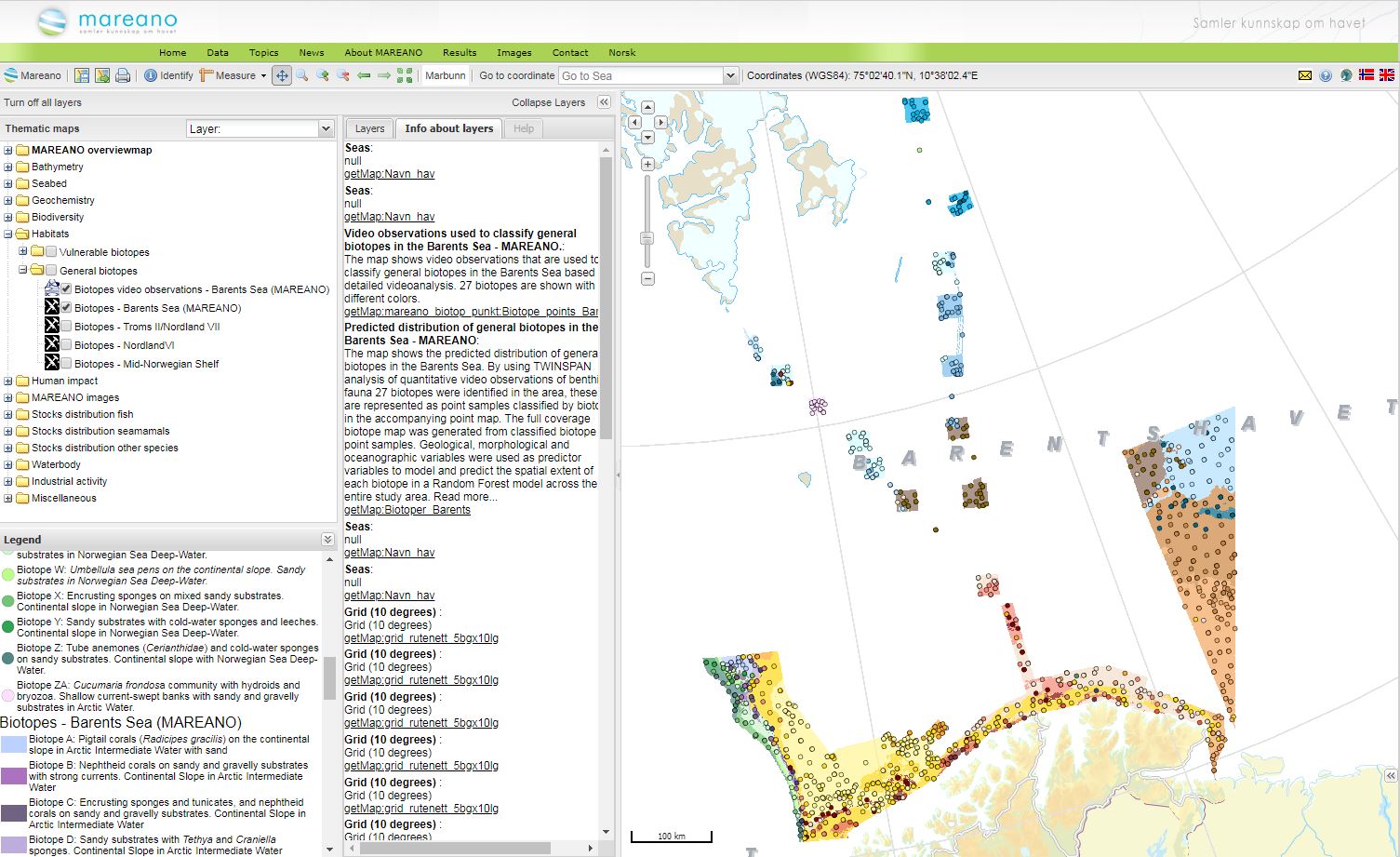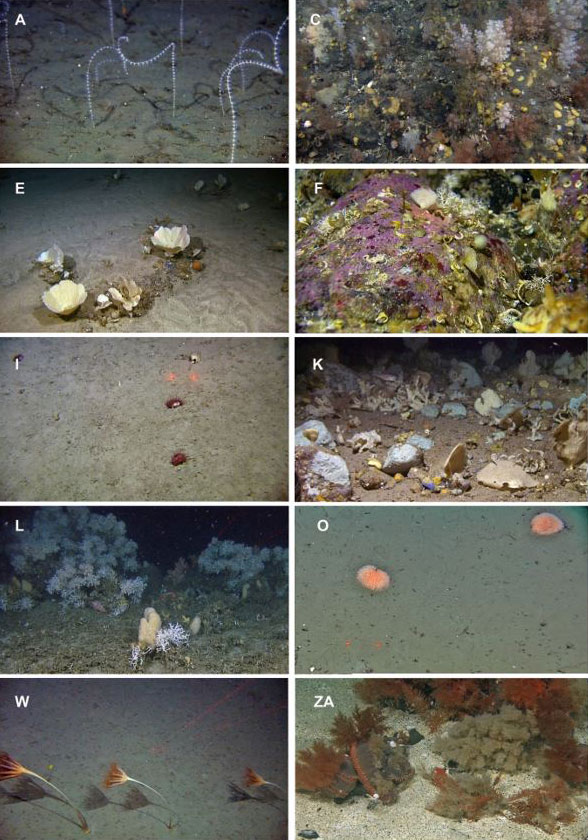

New general biotope map for the Barents Sea
Published: 24.10.2019

A total of 27 distinct biotopes were identified within the study area on the basis of the species composition as identified from Mareano video data. Each biotope represents a characteristic suite of animals living on the seabed in particular environmental conditions. Below we see some examples of the different biotopes, giving a flavour of the variety across different water masses.

Maps of biotope distribution are provided in two complementary formats:
- A point map showing observed sample points (200 m sections of video data) classified by biotope.
- A full coverage raster map showing the predicted distribution of biotopes across the entire mapped area. This map is based on the point map and full coverage environmental data which facilitates prediction between observed points.
The large area mapped and large volume of samples included have made it necessary to update the methods used for classification and modelling as compared to those used previously in Mareano. The new approach is more robust and suitable for analysis of large datasets and we look forward to applying this approach when updating biotope maps for all Mareano areas to provide a harmonised output.
Further details on the techniques used for classification, modelling and prediction used in the Barents Sea General Biotope Map are available here.

